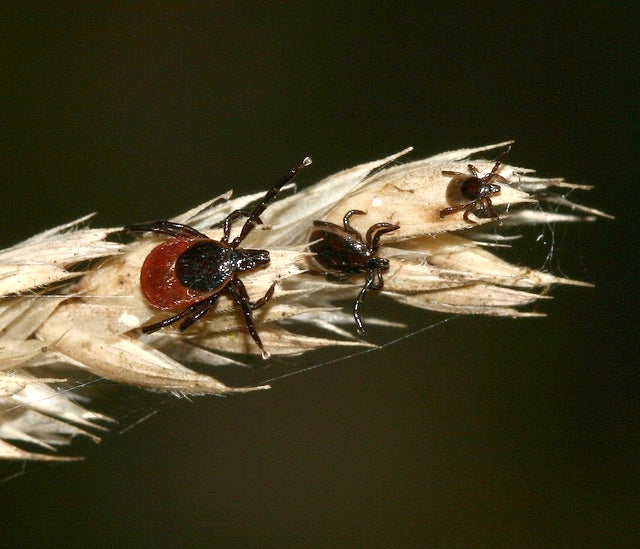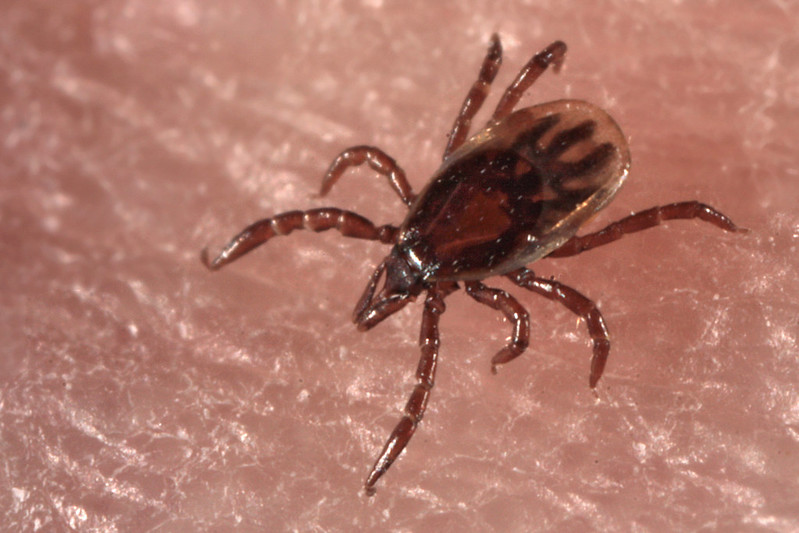Larry Meiller learns about the red lily leaf beetle and its presence in Wisconsin. Plus, a reminder about deer ticks and their life cycle.
Featured in this Show
-
Because They're Tough To Spot, Deer Tick Nymphs Transmit Disease More Than Adults
At this time of year, most people are guard against swarms of mosquitoes, gnats and mayflies.
But according to entomologist Phil Pellitteri, people should be paying more attention to the deer tick — partly because of the dangerous life stage many members of its species have entered.
“The big thing at this time of the year is that the smaller stage of the deer tick, the nymphal stage, is out and active,” said Pellitteri, a distinguished faculty associate emeritus and recently retired head of the University of Wisconsin-Madison Insect Diagnostic Lab. “It’s harder to see, and it is the more-likely culprit to transmit Lyme (disease) and some of these other diseases. So, that’s why people need to keep their guard up.”
In their nymphal stage, deer ticks are the size of a small sesame seed, Pellitteri said. Adult ticks are quite a bit bigger and are spotted more easily.
Nymphs, however, are less conspicuous, and are better able to attach and burrow in to skin without humans noticing.
As a result, Pellitteri said, the likelihood that the nymphs transmit disease is much higher, even though the percentage of nymphal ticks that carry disease is “half of what it is in the adults.”
He added that recent estimates find that 40 percent of adult deer ticks and 20 percent of nymphs carry the disease.
If a person finds a small tick on them at this time of year, Pellitteri said to assume it’s a deer tick. The window for removing it to avoid infection is 36 to 48 hours. If the tick has been attached for close to that amount of time, it’s a good idea to see a doctor due to the high incidence of Lyme disease in the state.
Pellitteri added that the U.S. Centers for Disease Control & Prevention protocol is that if a tick has been present long enough for possible infection, a one-day dose of antibiotics as a prophylactic measure is given.
An additional recommendation from the CDC is to put clothes that may have ticks hiding in them in the dryer immediately upon returning home — specifically, putting them through a high-temperature dryer cycle for one hour. Pellitteri agreed with the advice.
“Insects have no way of cooling themselves,” he said. “So that’s why those kinds of heating cause high mortality.”
The CDC has a resource page on Lyme disease with information on transmission, symptoms, testing, treatment and more.
Those interested can also look at this CDC chart that shows the difference in size between adult and nymphal deer ticks.
Episode Credits
- Larry Meiller Host
- Judith Siers-Poisson Producer
- Phil Pellitteri Guest
Wisconsin Public Radio, © Copyright 2025, Board of Regents of the University of Wisconsin System and Wisconsin Educational Communications Board.

